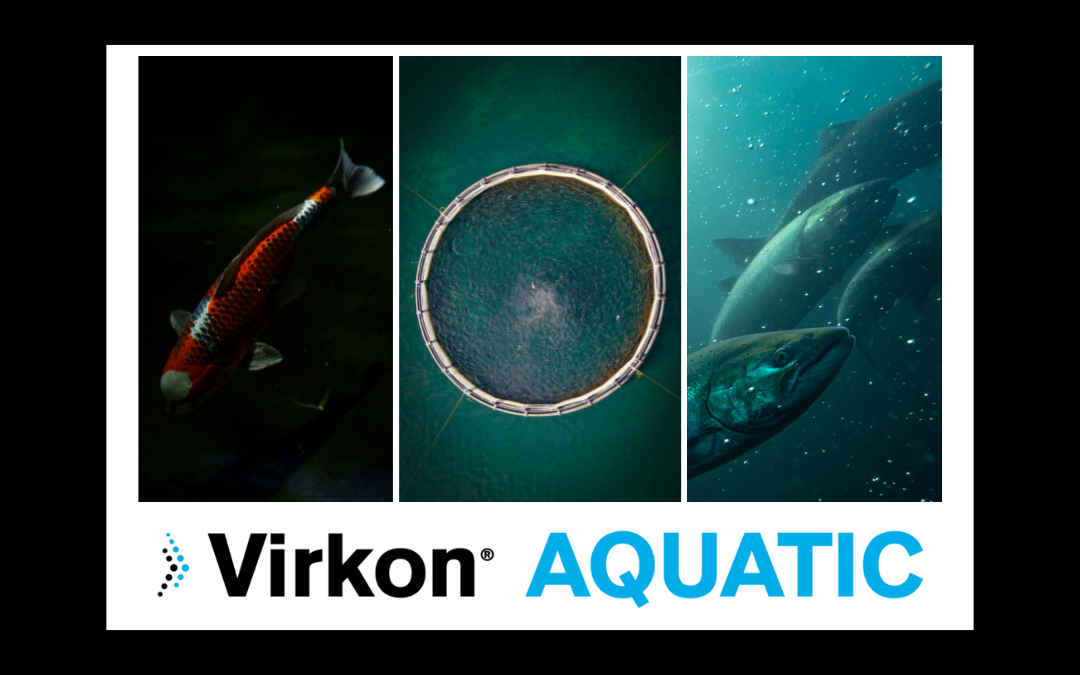BIOSECURITY IN UK AQUACULTURE
Aquaculture is one of the UK’s fastest-growing food production sectors. In Scotland, farmed salmon is among the country’s top exports. But with expansion comes greater risk—disease, parasites, and hygiene breakdowns are increasingly threatening fish health, farm performance, and public confidence.
This article looks at what’s driving these problems in the UK aquaculture industry, and how producers are responding. We’ll also explore how effective biosecurity practices, including the use of reliable disinfectants like Virkon® Aquatic, are playing a key role in safeguarding stock.
What’s Threatening Fish Health in the UK?
Sea Lice: A Persistent Parasite
One of the biggest ongoing challenges is sea lice (Lepeophtheirus salmonis), a parasitic crustacean that attaches to the skin and gills of salmon. It causes lesions, reduces growth rates, and can even kill fish if untreated. Chemical treatments have become less effective over time due to resistance, prompting the industry to shift towards Integrated Pest Management (IPM) strategies.
These include biological controls (such as cleaner fish), mechanical removal, and selective breeding for resistance.
Source: Marine Scotland Science, Sea Lice Report 2024
Infectious Diseases: Bacteria and Viruses
Several highly contagious diseases continue to affect UK fish farms:
- Infectious Salmon Anaemia (ISA): a notifiable viral disease causing significant mortality.
- Pancreas Disease (PD) and Infectious Pancreatic Necrosis (IPN): both viral and widespread.
- Furunculosis: caused by Aeromonas salmonicida, leading to internal bleeding and ulcers.
These infections can spread rapidly if not contained and are often exacerbated by poor hygiene or insufficient quarantine procedures.
Source: Fish Health Inspectorate; OIE Aquatic Animal Health Code
Weak Biosecurity and Hygiene Failures
In aquaculture, pathogens don’t just spread through fish-to-fish contact. They travel via water, contaminated equipment, work clothing, feed bins, vehicles—even by birds. That’s why well-planned biosecurity protocols are essential, especially during stock movements or site cleaning.
An important tool in controlling the spread of disease is the proper use of specialist disinfectants formulated for aquaculture systems.
Virkon® Aquatic, for example, is designed specifically for use in aquatic environments. It has proven efficacy against a wide range of viral, bacterial, and fungal pathogens and is used in disinfecting tanks, nets, equipment, footbaths, and transport containers—without harming aquatic life or polluting water systems.
Learn more at: www.virkon-disinfectants.co.uk
Source: Lanxess Biosecurity Solutions; DEFRA Approved Disinfectants List
Environmental and Operational Stress
Stocking density, oxygen depletion, ammonia accumulation, and elevated water temperatures all contribute to fish stress and immune suppression. These conditions make fish more susceptible to infection and reduce their ability to recover from disease.
With climate change leading to warmer and less oxygenated waters, these risks are growing.
Source: FAO, Impacts of Climate Change on Fisheries and Aquaculture, 2023
How the Industry is Responding
Despite these challenges, the aquaculture sector is evolving fast. New technologies and best practices are helping farms minimise losses and improve fish welfare.
1. Integrated Lice Management
- Cleaner fish like wrasse and lumpfish eat lice off salmon
- Mechanical systems such as thermolicers and hydrolicers
- Chemical rotation to avoid resistance
- Genetic selection for lice-resistant strains
Sea lice levels are now closely monitored and capped under Scottish regulation.
2. Disease Prevention Through Vaccination
Vaccination is widely used to reduce reliance on antibiotics and improve disease resistance. Most salmon are vaccinated in hatcheries before transfer to sea pens.
New research is exploring oral and immersion vaccines, which are less stressful than injection.
3. Disinfection and Sanitation Practices
Good hygiene is non-negotiable on a modern fish farm. That includes cleaning and disinfecting:
- Nets, tanks, and pipes
- Work surfaces and tools
- Footwear (via footbaths)
- Vehicles and fish transport containers
Virkon® Aquatic is one of the most widely respected disinfectants for aquaculture use. It’s effective against key pathogens and is biodegradable, fast-acting, and safe when used correctly.
When incorporated into a structured cleaning schedule, studies have proven that Virkon® Aquatic helps maintain biosecurity and protect fish health.
4. Fallowing and Farm Rotation
Allowing fish pens to remain empty between production cycles helps break parasite and pathogen lifecycles. Many farms also alternate between sites to reduce disease pressure.
Source: SEPA, Aquaculture Site Management Guidance, 2022
5. Environmental Monitoring
Sensors and real-time data tools are now being used to monitor:
- Oxygen levels
- pH and ammonia
- Temperature and salinity
- Suspended solids
Being able to react quickly to water quality changes can help prevent stress-related disease outbreaks.
Compliance and Oversight
The UK aquaculture industry is closely regulated. Agencies such as Marine Scotland, SEPA, and the Fish Health Inspectorate regularly inspect farms and monitor for disease. Notifiable disease outbreaks must be reported, and strict containment and fallowing measures may be enforced.
Biosecurity plans, staff training, and documented cleaning procedures are all essential parts of compliance.
What’s Next: Future-Proofing Fish Health
Innovation in aquaculture is accelerating, with major developments including:
- Closed containment systems (CCS) that isolate fish from external waters
- AI camera tech that identifies early signs of disease or lice
- Genetic programmes that build more robust fish populations
- Real-time data sharing between farms to track localised outbreaks
But even as these new tools emerge, the fundamentals remain the same: clean environments, careful management, and robust biosecurity protocols.
That includes the ongoing use of proven disinfection products, applied with consistency and care.
Moving Forward with Day-Impex® and Virkon®
Aquaculture in the UK is under pressure, but it’s also showing resilience. With smarter disease prevention strategies, tighter hygiene controls, and proper use of Virkon® Aquatic, fish farms can continue to thrive.
The challenge now is consistency: making sure biosecurity is part of the everyday routine—not just a reaction to crisis.
To learn more about Virkon® Aquatic and how it fits into best-practice hygiene regimes, visit:
www.virkon-disinfectants.co.uk

